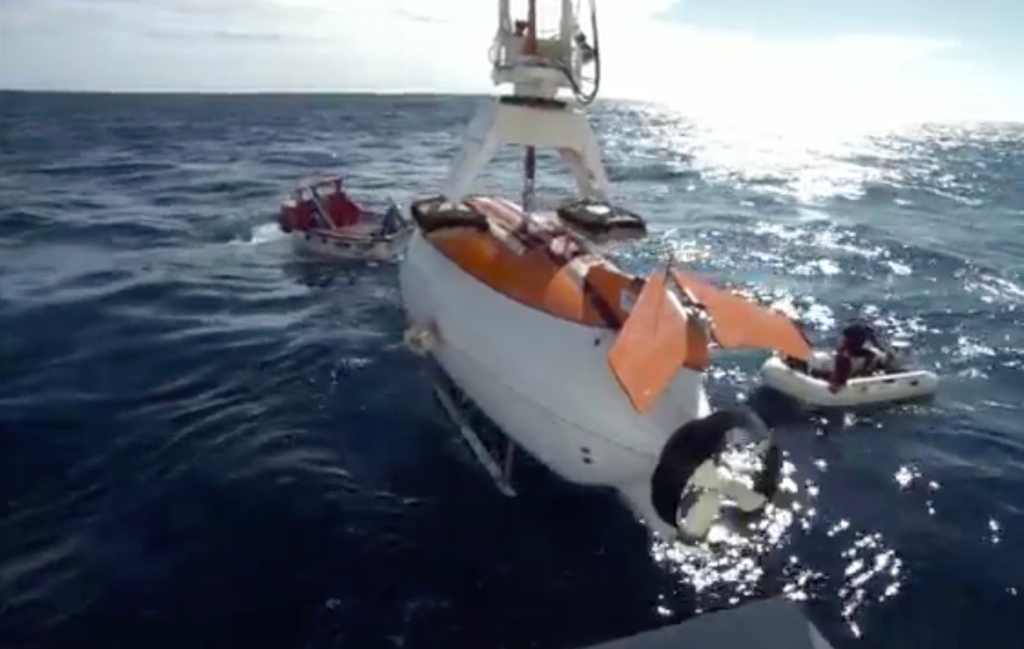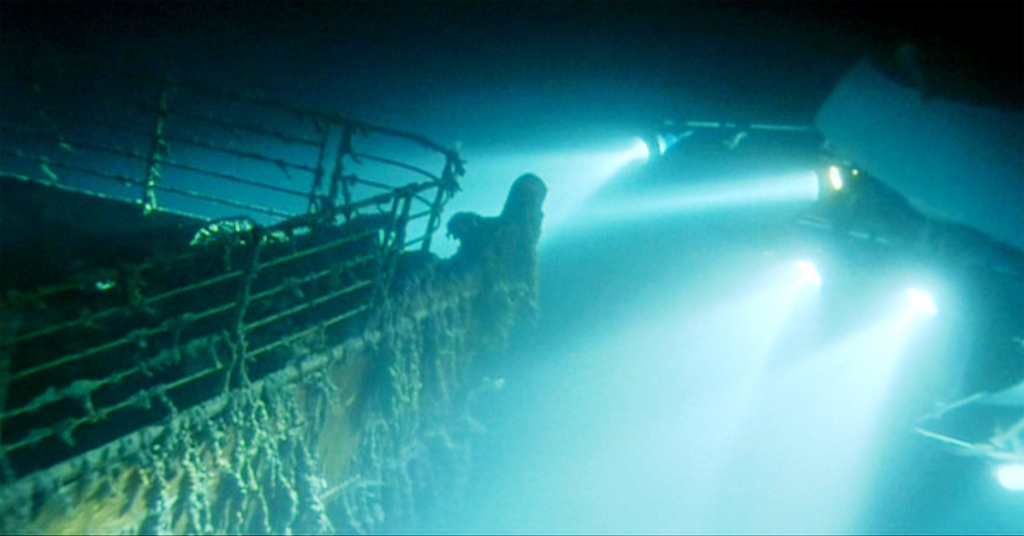James Cameron was on a Titanic submersible dive during 9/11
Amid the disappearance of a tourist submersible on an expedition to the Titanic wreckage, a story of one of filmmaker James Cameron’s most harrowing dives to study the same famous shipwreck — and what he would find out after — has surfaced.
The Academy Award-winning director of “Titanic” was inside a submersible vessel nearly 13,000 feet underwater on the fateful date of Sept. 11, 2001.
After the now-68-year-old director and his crew finished their exploration of the sunken vessel, which killed about 1,500 people in 1912, and returned to the main ship, Cameron was told of the nightmare that happened on American soil just 12 hours earlier.
“What is this thing that’s going on?” Cameron asked the late actor Bill Paxton, who played treasure hunter Brock Lovett in the film.
“The worst terrorist attack in history, Jim,” Paxton told him.
Paxton recounted for Cameron the nightmare that took place: Planes crashed into the World Trade Center’s Twin Towers in Manhattan, just minutes apart in a terrorist attack that, all told, killed about 3,000 people, including those who were lost in separate crashes at the Pentagon in Washington, DC, and in Pennsylvania.
Cameron realized he “was presumably the last man in the Western Hemisphere to learn about what had happened,” he told Spiegel International in 2012.
The filmmaker also started to ponder why they were even diving toward the bottom of the North Atlantic on that day in the first place.


“The day the 9/11 terrorists murdered 3,000 people in New York and Washington, I was just diving into the Titanic,” he told the outlet. “For a while, I thought, ‘Why are we diving into history while new parts are made, while the very ground we are standing on is shaking?’ “
Paxton, who died in 2017, told the Guardian in 2002, “I said, ‘Jim, the world changed from the time you went down till you came back.’ It was strange. We felt a little bit like survivors out there.”
Tourist submersible exploring Titanic wreckage disappears in Atlantic Ocean
What we know
A submersible on a pricey tourist expedition to the Titanic shipwreck in the Atlantic Ocean has vanished with likely only four days’ worth of oxygen. The US Coast Guard said the small submarine began its journey underwater with five passengers Sunday morning, and the Canadian research vessel that it was working with lost contact with the crew about an hour and 45 minutes into the dive.
Who is on board?
The family of world explorer Hamish Harding confirmed on Facebook that he was among the five traveling in the missing submarine. Harding, a British businessman who previously paid for a space ride aboard the Blue Origin rocket last year, shared a photo of himself on Sunday signing a banner for OceanGate’s latest voyage to the shipwreck.
Also onboard were Pakistani energy and tech mogul Shanzada Dawood and his son Sulaiman, 19; famed French diver and Titanic expert Paul-Henri Nargeolet, and OceanGate founder and CEO Stockton Rush.

What’s next?
“We’re doing everything we can do to locate the submersible and rescue those on board,” Rear Adm. John Mauger told reporters. “In terms of the hours, we understood that was 96 hours of emergency capability from the operator.
Coast Guard officials said they are currently focusing all their efforts on locating the sub first before deploying any vessel capable of reaching as far below as 12,500 feet where the Titanic wreck is located.
While the Coast Guard has no submarine capable of reaching those depths, officials are working around the clock to make sure such a vessel is ready if and when the Titan sub is located.
As of Tuesday afternoon, officials said there was only 40 hours of oxygen left on the Titan.
Mauger, first district commander and leader of the search-and-rescue mission, said the US was coordinating with Canada on the operation.
READ MORE
In Cameron’s 2003 documentary “Ghosts of the Abyss” about the Titanic wreckage, he added, “We were all very wrapped up in what we were doing and we all thought it was desperately important. And then this horrible event happened and slammed us into this perspective.”

“The morning after the attack on September 11th, I kept thinking how trivial this expedition suddenly became. It just wasn’t a big deal anymore,” a crew member agreed.
Although, as Cameron struggled to explain to himself why they were still doing submersible dives, he came to realize that the movie could actually help people cope with a large-scale tragedy.
“Some days later, I realized that ‘Titanic’ gave us help in interpreting the new disaster, in exploring the feelings of loss and anger,” he told Spiegel International. “Why do people watch ‘Titanic?’ It’s partly because they can cry. Loss is a part of our life; it’s about love and death and about death partly defining love. And these are things we all have to cope with.”
Read the full article Here


